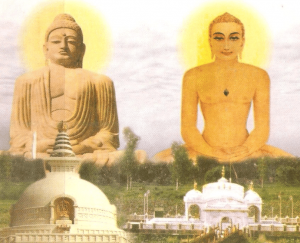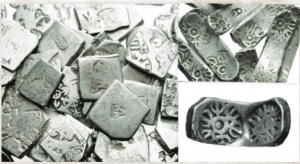LAQ for Chapter 4 New Beginnings: Cities and States Class 7 Social Science NCERT
Important Questions1
Q1: What factors led to the growth of mahajanapadas in the Ganga plains?
Answer
• The Ganga plains had fertile soil, which supported farming and fed large populations.• Nearby mountains provided iron ore to make tools and weapons.
• Trade networks developed along rivers and roads, connecting different regions.
• These factors supported stronger economies and armies.
• As a result, many janapadas merged into powerful mahajanapadas.
• The plains became a center of India’s Second Urbanisation.
LAQ
2
Q2: How did the gana-sangha system show early democratic traditions in India?
Answer
• In the gana-sangha system, decisions were made by a council rather than a single ruler.• Members discussed matters and voted, sometimes even choosing or removing their raja.
• This system encouraged shared leadership and public participation.
• It was used in places like Vajji and Malla.
• These early republics were among the world’s first democratic systems.
• Though not perfect, they showed early democratic values.
LAQ
3
Q3: Explain the impact of Buddhism and Jainism during this period.
Answer
• Buddhist and Jain teachings spread across India through monks, nuns, and pilgrims.• They taught values like non-violence, truth, and simple living.
• These religions attracted people from different jātis and offered alternatives to the strict varna system.
• They supported education and art, influencing Indian culture deeply.
• Their messages were spread through both oral traditions and written texts.
• This helped unite diverse regions under shared ideas.

Buddhism and Jainism
LAQ
4
Q4: What were the cultural contributions of this period in art and learning?
Answer
• This period saw growth in sculpture, architecture, and painting influenced by religious and social ideas.• Scholars and teachers spread knowledge through new schools of thought.
• Artistic styles developed in cities, temples, and monasteries.
• This laid the foundation for the great art of later empires.
• Cultural exchange through trade routes enriched these contributions.
• Cities became centers of both learning and creativity.
LAQ
5
Q5: Describe the features and significance of punch-marked coins.
Answer
• Punch-marked coins were India’s first coins, made of silver and stamped with symbols.• They helped make trade easier and more organized.
• Each mahajanapada issued its own coins, but they were used widely across regions.
• These coins were not only used locally but also traded with other countries.
• Their use shows the rise of market-based economies.
• They marked a shift from barter to monetary systems.

Punch Marked Coins
LAQ
6
Q6: How did the varna-jāti system evolve, and what were its effects?
Answer
• The varna-jāti system began as a flexible way to organize work and society.• Early on, people could change occupations based on need.
• Over time, roles became hereditary and rigid, limiting social mobility.
• This led to inequality and unfair treatment of lower jātis.
• British rule later made the system even more fixed and discriminatory.
• Despite its flaws, the system shaped Indian society for centuries.
LAQ
7
Q7: What was the role of trade routes like Uttarapatha and Dakshinapatha in this period?
Answer
• The Uttarapatha connected northwest India to the Ganga plains and eastern cities.• The Dakshinapatha linked central India to the south.
• These trade routes helped goods, people, and ideas move across regions.
• They connected inland cities to coastal ports involved in foreign trade.
• As a result, economic and cultural exchange increased across the subcontinent.
• Roads also supported military and religious journeys.
• These routes helped unify India during this time.
LAQ
8
Q8: How did cities like Śhiśhupalgarh reflect urban planning and trade in ancient India?
Answer
• Śhiśhupalgarh in Odisha had a square layout with wide roads and strong fortifications.• It served as the capital of Kalinga and shows advanced planning for safety and trade.
• Artifacts found here suggest active local and foreign trade.
• The city had public spaces, planned streets, and gateways for movement.
• It reflects how cities became centers of power and culture.
• Urban design supported both economic growth and security.
LAQ